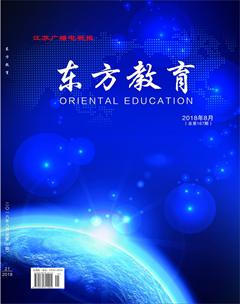佛禅思想与中国古代文人山水画
彭镜
摘要:本文著眼于传统文化,从“佛禅”、山水画渐变与时代特征的角度,探寻了“佛禅”对画家观照自然与崇尚理意的相通境界,情寄笔墨与山水的思虑表现,以及南北宗论在山水画史上的地位和影响。
关键词:文人山水画;笔墨;禅意;禅境
From the ancient literati landscape painter's life ideal and the aesthetic interest and the spiritual state are basically the same this situation can deconstruct the outstanding achievement but not yet the choice of life, independence. The more he thought, the more he thought, the more he thought. They take part in the zen and enlightenment, invest in the natural landscape, balance their own mentality, or take it as the soul of sustenance and replacement of reality. When they will be painting as a way to express feelings, natural landscape as the main aesthetic object, or a means of "point", become a personality sublimation and self-perfection way of life. In the spiritual realm of "futility" of the fusion object, under the implicit or natural state of emotion, "all things are good for speech", to eliminate the empty feeling of the heart. With the deep and elegant brush and ink landscape, the existence of life is realized, and the rhythm of life is shown clearly, so as to obtain the freedom of personality. In the contemplation and intuition of the natural landscape, we get "emptiness" and clear mind. And this is all in line with the buddhist "zen".
During the southern and northern dynasties of liu and song dynasties, painter zong bing studied Buddhism deeply. His thoughts consistent with Buddhism prajna sent a monk hui yuan, bring up in the preface to landscape painting "saint of way reflected, sage and dearing taste like", "it should be eye knowing as principle", "in god's saints method and sage tong", "boring melt its way", the chang of the "god" and so on. ZongBing induces the landscape painting creation process in the imagination of "thinking" activity, twitters and artistic conception of comprehension, is ZongBing understanding of natural keeping, in the mentality of shun likelihood coolly contains the good, is full of calm thought and the wind of the metaphysics, in the form of landscape painting to reflect the natural inaction, make good living feeling to express their idea chang, pick up.
In the composition of traditional culture, buddhist thought of "all laws are empty" and Lao zhuang's thought of "empty tranquility" are in harmony with each other. The two infiltrated into each other, giving rise to neo-confucianism and neo-taoism, and the emergence of Chinese zen Buddhism. "Zen" means "meditation of thought" and "meditation of thought", which summarize the buddhist practice. "Zen" emphasizes the awakening of the mind and the intuition of comprehension, so as to make people's inner peace and comfort in the solemn practice. Bodhidharma of the northern wei dynasty taught zen law in China, taking the jinggang sutra and shurangyan sutra as the core, and became the classic book for buddhist monks to learn zen Epiphany. After dharma, huike monks, can, daoxin, hongren and menxia huineng and shenxiu developed into two major schools, namely, the southern sect of insight and the northern sect of enlightenment. After the middle tang dynasty, the zen Buddhism Taoist practice of drinking with a stick, "those who do not have thoughts are mindful". In the landscape painting, "wu daoxuan, the sky pays strength, the young embrace divine ao" (tang yanyuan). Zen Buddhism talks about "understanding". The enlightened have the characteristic of image intuition. "Zen interest" is embodied in the artistic realm of landscape painting, pursuing the pure heart, quiet environment and spiritual emptiness. The literati landscape painter has experienced the process of leisure and elegance. Therefore, it is said that "the xuandao lies in the understanding, and the realization lies in the truth", that is, the "true knowledge" of the Buddhism, which can be distinguished. Therefore, Buddhism's discussion on zen and enlightenment is also commonly seen between landscape painting and literary theory.
From the perspective of the development history of landscape painting, there are also two different ways of understanding. There are different ways of pursuing interest and paying attention to object and image. There is a possibility of change and transformation, and it is true that both the light and the light are biased. Although we should recognize dong qichang's sectarian mood, we should not hinder the landscape painter to treat the two methods of creation differently. Zen thoughts are also fluid and changing; Spatiotemporal behavior is an unimpeded rhythm of life. Dong qichang has a good understanding of the creation of objective nature and landscape painting, and shows his "zen principle" in the comparison between nature and painting. In the view of the delicacy of brush and ink, the landscape is not as good as the painting ", which is more conducive to the understanding of the relationship between nature and brush and ink.
Today, we should turn inward feelings, standing on the base of material civilization era, the endless nature of things and the relativity of human knowledge, the limitation of the infiniteness of the universe and the specific things contrast analysis, using the dialectical relationship of infinite and finite, break through the limitations of on understanding, so as to see the endless universe of heaven and earth. With a genuine view of the natural life of a reasonable opportunity, remote thinking of the ancient traditional human spirit of the ideological theory.
References:
[1]zhang wenxun. Exploration of Confucianism, Taoism and Buddhism's aesthetic thoughts. China social science press, Beijing, 1988.
[2]zong baihua, art environment, Beijing university press, 1987.
[3]li shiten, ten lectures on Chinese philosophy, jiangsu education press, nanjing, 2005.

